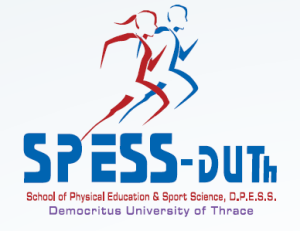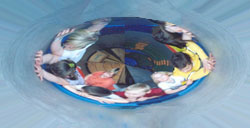Despite a significant evidence base about the benefits of physical activity [PA], most children remain resistant to adopting and maintaining active lifestyles. There have been several large studies of the physical activity characteristics of young people in Europe over the last decade. European boys of all ages participate in more physical activity than European girls and the gender difference is more marked when vigorous activity is considered. There is a marked reduction in activity over the adolescent years (Armstrong & Welsman, 2006). Several types of intervention have been used to increase the PA levels of young people in Europe. In a recent systematic review of interventions, Van-Sluijs et al. (2007) identified 57 studies worldwide, of which 17 were conducted in Europe (9 in UK, 3 in Greece, 1 in Ireland, 1 in France, 1 in Finland, 1 in Netherlands, and 1 in Spain). Eight of the 17 EU studies exhibited high methodological quality. The studies (13 out of 17) focusing on children (<12 years) employed educational (6 studies), environmental (4 studies), and multi-component (3 studies) interventions. Three high quality educational studies, 1 high quality environmental study, and 1 high quality multi-component study reported a significant positive effect. All except one (family-based intervention) study of children involved school-based interventions. Five studies were restricted to school setting only and six evaluated school-based interventions which also included family or community components. Four of the school setting only interventions, and four of the school plus family or community interventions reported a significant positive effect. The studies (4 out of 17) focusing on adolescents (>12 years) employed educational (2 studies) and multi-component (2 studies) interventions. Only 1 multi-component study was considered to be of high quality and this study reported a significant positive effect of a school plus family or community component. The limited number of European studies highlights the need for more high quality studies. From the 13 studies conducted with children, 8 reported a significant positive effect and they were all school-based interventions. Only 4 European studies focused on adolescents, stressing the urgent need for interventions targeting this population. Overall, the evidence from the 57 studies worldwide was inconsistent for children with the strongest effects coming from studies with adolescents. Specifically, some evidence of effect was shown for environmental interventions targeting children, whereas multi-component interventions may make important differences in physical activity levels in adolescents. These findings support recent calls for the incorporation of both individual-level and environmental-level factors in an integrated approach to physical activity research and practice. Considering multiple levels (e.g., intrapersonal, interpersonal, home, school, community, policy) of influence on young people’s behaviour will contribute to the understanding of the principal determinants of PA and the causes of the inactivity among young people. This approach requires interventions that are context-specific, expand outside the school setting and are developed locally. Although there are currently no interventions which could be described as a model for “best practice”, new interventions need to mesh better with how the problem of inactivity is dealt in real life settings.






